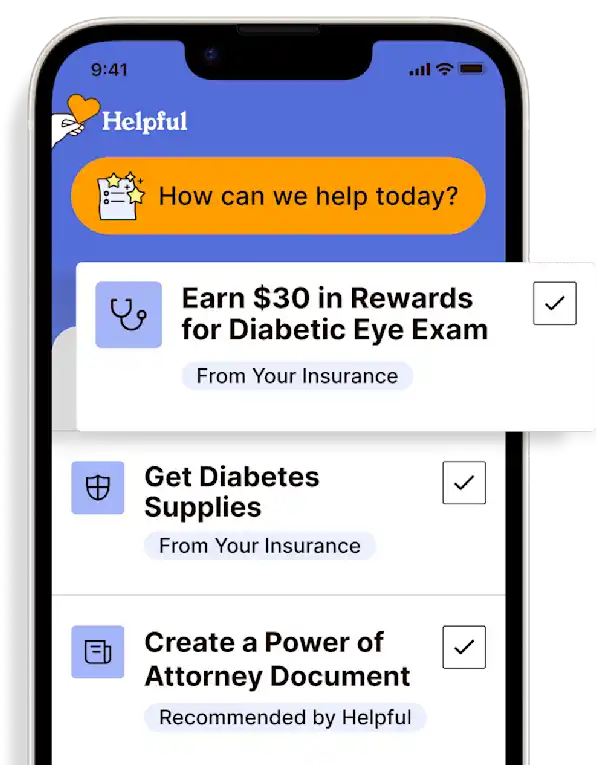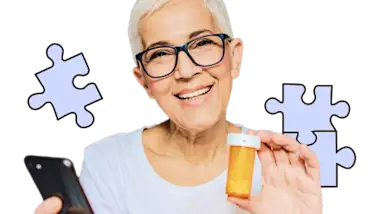How to Get Paid for Caring for a Loved One in New York (CDPAP Guide)
If you live in New York and care for an aging parent, a partner with a disability, or a child with special needs, you may be eligible to get paid for the care you provide — through a program called CDPAP (Consumer Directed Personal Assistance Program).
Get insurance benefits, legal documents, and medical records in one place

What is CDPAP?
CDPAP is a New York State Medicaid program that lets people who need long-term care hire their own caregivers — including family members, adult children, and close friends. Unlike traditional home care services, CDPAP allows your loved one (the "consumer") to choose, train, and direct their own caregiver, who is then paid by a fiscal intermediary (a state-authorized agency that handles payment and benefits).
CDPAP caregivers can help with:
Cooking, cleaning, dressing, and bathing
Administering medications
Assistance with medical needs (with training)
Companionship and mobility support
Who Can Be Paid as a Caregiver?
Under CDPAP, a caregiver can be:
A family member, including adult children
A friend or neighbor
In some cases, even a spouse (recent changes allow this with approval)
A caregiver cannot be:
The recipient’s legal guardian if they are not self-directing
Someone under 18 years old
Who Qualifies for CDPAP?
To use CDPAP, your loved one must:
Be eligible for New York Medicaid
Require help with activities of daily living (ADLs) such as dressing, bathing, eating, or walking
Be able to direct their own care — or have a designated representative do it for them
How to Apply (Step-by-Step)
Step 1: Apply for Medicaid (if not already enrolled)
Your loved one must have New York State Medicaid to access CDPAP.
✅ You can apply online at nystateofhealth.ny.gov 📞 Or call the NY State Medicaid helpline: 1-800-541-2831
Step 2: Get a Long-Term Care Assessment
Once enrolled in Medicaid, your loved one needs to be assessed to determine if they qualify for long-term care services.
This is done through the Conflict-Free Evaluation and Enrollment Center (CFEEC), operated by Maximus.
📞 Call 1-855-222-8350 to schedule a nurse visit. 🕒 Expect a home visit within a few days to assess your loved one’s needs.
Step 3: Choose a Managed Long Term Care Plan (MLTC)
If your loved one is approved, they must enroll in a Managed Long Term Care plan that covers CDPAP. Each plan has its own list of fiscal intermediaries.
🔍 You can compare MLTC plans and CDPAP support through New York Medicaid Choice: https://www.nymedicaidchoice.com/ 📞 Call 1-888-401-6582 for help choosing a plan.
Step 4: Pick a Fiscal Intermediary
Once enrolled in a plan, you’ll need to select a fiscal intermediary (FI) — an agency that processes caregiver timesheets and issues payment.
Your loved one or their representative will work with the FI to:
Enroll the chosen caregiver
Complete any training and paperwork
Submit hours worked for payment
Many fiscal intermediaries offer caregiver onboarding support. Some allow timesheet submissions via app or phone.
Step 5: Start Getting Paid
Once everything is approved, the caregiver can begin providing services and will receive regular payment (typically biweekly).
💸 Pay rates vary by county and FI, but often range from $15 to $21/hour, with overtime in some cases.
Caregivers are considered employees of the FI, not of the person receiving care.
Frequently Asked Questions
Can I get paid to care for my parent?
Yes — adult children can be paid caregivers through CDPAP.
Can I get paid to care for my spouse?
Possibly. Recent changes allow spouses to serve as paid caregivers with special approval.
Can I still work another job?
Yes, as long as you’re able to fulfill the caregiving hours agreed upon with the fiscal intermediary.
What if my loved one has Medicare, not Medicaid?
CDPAP is only available through Medicaid. You may want to look into applying for Medicaid or using Medicaid spend-down if your loved one is over income limits.
Need Help?
If you'd like help:
Finding a fiscal intermediary
Understanding Medicaid eligibility
Completing CDPAP paperwork
Helpful can support you every step of the way. Contact us at: support@wearehelpful.com
Get more support and guidance on insurance benefits, medical records and legal forms.
Helpful brings together your insurance benefits, legal documents, and medical records in one personalized place — so you always know what you have, and never have to search again.

Technology for Health Tasks. Mental Health for the Tough Stuff.
Helpful connects your medical records, insurance, and caregiving tasks automatically. And when you need more than logistics, a therapist is here to guide you.
In-Network and Covered
For Individuals, Couples and Families
HIPAA Compliant, Data Stays Private






